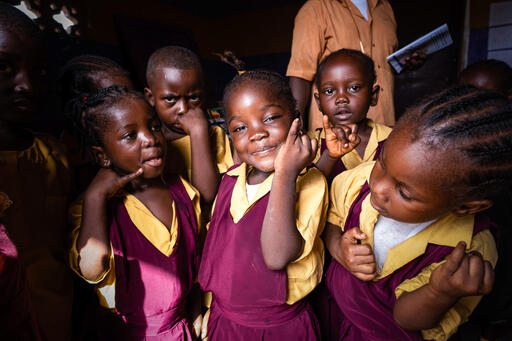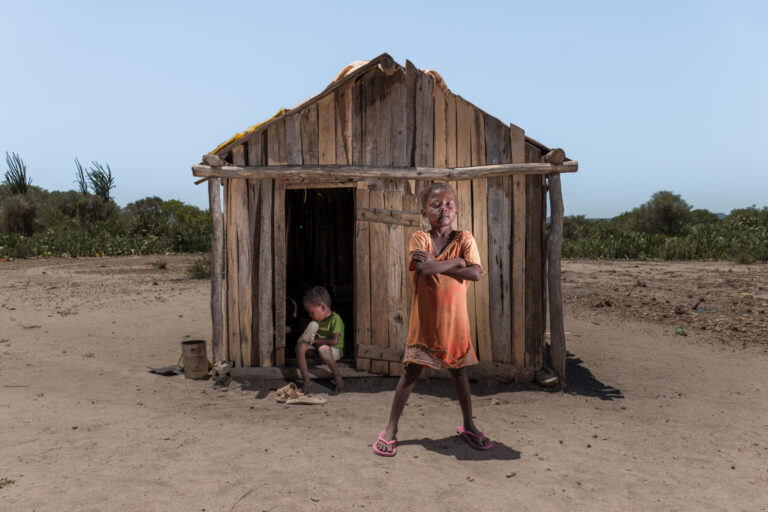The commonality of violence in children’s lives worldwide is staggering. According to A Familiar Face, a report by UNICEF on violence against children and adolescents, violence often starts as early as infancy and affects children in every stage of childhood. Though it causes serious hindrances to a child’s well-being, violence is often perpetrated by people children know and trust – family members, caregivers, teachers, friends and intimate partners.

Violent discipline is pervasive and often deemed necessary by caregivers.
Worldwide, many caregivers believe physical punishment is necessary in child rearing, and an astonishing proportion (75 per cent) of children between 2 and 4 years of age experience violent physical or verbal punishment.
Lack of knowledge about developmental norms – such as infants’ and toddlers’ abilities to understand complex instructions – often leads to ineffective and harmful disciplinary practices with children as young as 12 months old. This is particularly damaging, as young children are at greater risk for physical injury and are not yet able to cope with their distress.
For many children, school is an unsafe or harmful place.
The very environment where children should be able to safely learn and grow is often the backdrop of day-to-day violence. Bullying on- and off-line is a significant issue for school-aged children worldwide, and in many countries teachers engage in violent punishment and abusive behaviour towards their students. Children who must risk violence to attend school have lower attendance rates, decreased performance and higher drop-out rates.
In situations of conflict, school-aged children are particularly vulnerable. In 2016, nearly 500 attacks or threats of attacks on schools were documented or verified in 18 countries or areas around the world. Yet during times of peace, schools continue to be susceptible to gun violence and shootings – three-fourths of documented school shootings that took place in the past 25 years occurred in the United States.
As children grow, they become increasingly vulnerable to violent deaths.
As children enter the second decade of their lives, the rate of violent deaths more than doubles what it had been during their first 10 years of life. Older adolescents aged 15-19 are three times more likely to die violently than younger adolescents aged 10-14. Homicide remains the largest source of violent adolescent deaths around the world, accounting for two-thirds, the highest rates of which are concentrated in Latin America and the Caribbean. Notably, the risk of homicide has both a gender and racial component: Almost half (47 per cent) of female homicide victims are killed by family members or intimate partners, compared to about 6 per cent of males. While homicides are disproportionately high for both Black adolescent boys and girls, non-Hispanic Black adolescent boys are 19 times more likely than non-Hispanic White adolescent boys to die from homicide in the United States. Similarly in Brazil, adolescent boys of African descent or multiracial origins are at greater risk of homicide than boys who are White.
In the Middle East and North Africa, adolescents are disproportionately at risk of death from war, civil insurrection and law enforcement. Though the region is home to only 6 per cent of the world’s adolescents, it accounts for more than 70 per cent of adolescent deaths from these causes.
Adolescent girls are often targets of sexual violence by close friends and family.
Though both adolescent boys and girls are at risk of sexual violence, adolescent girls are especially vulnerable. In countries with available data, the vast majority of adolescent girls who experienced forced sex said this happened for the first time after age 10. The same proportion were assaulted for the first time by someone close or known to them. Survivors of child sexual abuse rarely report their assailants or seek help due to a variety of factors including social norms, fear, shame and confusion.

The data are clear: children are at risk of violence due to a variety of factors, but are most often harmed at the hands of people they know and trust. UNICEF’s work with governments, families, schools and other national and local partners has helped change laws, child disciplinary practices and attitudes in many countries. Still, only 60 countries have fully prohibited the use of corporal punishment in the home, leaving more than 600 million children under 5 years of age at risk of violence. And 732 million school-age children live in countries where corporal punishment at school has not been fully prohibited.
With continued investigation and analysis of the data, the urgent need for change can be communicated, governments can be held accountable, programmes can be evaluated and policies can be changed. Ending violence against children is everyone’s responsibility.

Read the full report here
Access the interactive data visualization
Access UNICEF’s data work on violence against children



